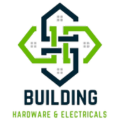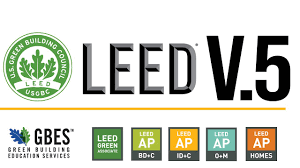LEED v5 introduces powerful new tools to help the world’s most forward-thinking buildings make deeper strides in human health, climate resilience, and sustainable community impact.
In a landmark move set to redefine sustainable design standards globally, the U.S. Green Building Council (USGBC) has officially launched LEED v5, the latest iteration of its renowned Leadership in Energy and Environmental Design (LEED) certification program. Marking 25 years since the standard’s inception, this comprehensive upgrade aims to tackle today’s most pressing environmental and human health challenges while offering clearer, actionable pathways for project teams worldwide.
“LEED v5 raises the bar,” said Peter Templeton, President and CEO of USGBC. “It further evolves best practices, giving stakeholders across the building industry clear routes to address challenges to our health, climate, and communities.”
Focused on Impact: Decarbonisation, Human Health, and Resilience
Designed with input from thousands of green building professionals, LEED v5 introduces major enhancements in three core areas: decarbonisation, human and ecological health, and climate resilience.
Decarbonisation alone accounts for 50% of all LEED v5 points, underscoring its urgency in the global climate agenda. The system targets operational emissions, embodied carbon, refrigerants, and transportation impacts, requiring all projects to create a long-term carbon reduction strategy. Tools for operational carbon projection will guide project teams toward delivering ultra-low-carbon buildings.
On the human front, LEED v5 gives new weight to occupant well-being, with quality-of-life credits that prioritise transparency, healthier environments, and community impact. With growing global demand for wellness-integrated design, these updates align with shifting expectations for the built environment.
In addition, climate resilience is embedded throughout the system, with all LEED v5 projects mandated to conduct climate risk assessments. These assessments aim to strengthen communities, safeguard assets, and offer strategies for risk mitigation and ecological restoration across a building’s entire lifecycle.
A Global Tool with Proven Value
According to Sarah Zaleski, Chief Products Officer at USGBC, LEED v5 is as much about performance as it is about accountability. “It provides best practices and measurable outcomes that building owners, investors, and occupants increasingly expect,” she said.
The economic case for LEED remains compelling. Certified buildings command an average 21.4% higher market sales price per square foot, 11% higher rent, and benefit from reduced water, energy, and waste consumption—contributing to lower operational costs and improved employee health and productivity.
“LEED bridges the gap between sustainability and commercial value,” noted Anica Landreneau, Senior Principal at HOK. “It helps organisations meet both environmental and business goals.”
Tailored for the Global Market
With new project priority categories and regional customisation, LEED v5 allows projects to align certification with local context and market-specific sustainability priorities. Certified projects will also receive impact reports to transparently communicate their sustainability performance to stakeholders.
Grace Kwok, Chief Sustainability Strategist at AEC Capital Limited, highlighted LEED v5’s relevance for the Asia-Pacific region, sharing that the International Commerce Centre (ICC) is the first LEED v5 project in Asia. “It sets a new benchmark in climate resilience and sustainable innovation,” she said.
The rollout follows extensive global consultation, with over 7,000 public comments informing the final version of the system. LEED v5 registration is now officially open for new construction, interior, and existing commercial building projects.
For a world facing intensifying climate threats and rising demand for healthier spaces, LEED v5 represents a timely and transformative framework—equipping the industry with the tools, guidance, and credibility needed to build a more sustainable future.




